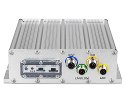Originally posted by xfcemint
View Post
Maybe I'll end up being wrong about how appreciative users can be, but the only way to know is after the fact.
Originally posted by xfcemint
View Post
The most likely path to a microkernel succeeding, IMO, would be trickle down from servers and workstations. That's how the Windows NT kernel ended up in consumer-grade hardware after all. It had been the workstation and server OS for several years before MS considered it to be a good idea to sell for consumers.
My guess their reason to not go at it at first was a combination of consumer hardware being too weak before (it did come with more memory overhead compared to building upon DOS) and probably some missing compatibility with software. Because consumer hardware is nowadays just a weaker version of what runs on servers a microkernel developed with high availability in mind for those may end up running in a consumer machine.
But even then it's something that will probably take no less than a decade due to migration costs. Only then and when compatible with current userspace is good enough it's likely that computers will start shipping a proper microkernel.





Comment